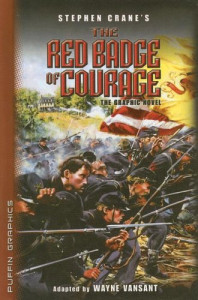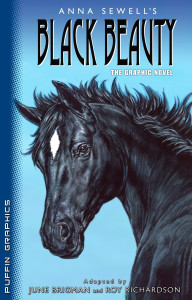 An adaptation of a novel, whether into a movie or a graphic novel, is never a wholly faithful translation. A novel has the advantage of having fewer constraints against length, and as such, paring down a classic into a more abridged format inevitably results in a loss of some of the subtlety that made the novel a classic in the first place. However, ignoring for the moment the blatant fact that adaptations can never remain identical to the original, when done well, adaptations can develop a creativity and presence of their own.
An adaptation of a novel, whether into a movie or a graphic novel, is never a wholly faithful translation. A novel has the advantage of having fewer constraints against length, and as such, paring down a classic into a more abridged format inevitably results in a loss of some of the subtlety that made the novel a classic in the first place. However, ignoring for the moment the blatant fact that adaptations can never remain identical to the original, when done well, adaptations can develop a creativity and presence of their own.
Wayne Vansant’s translation of The Red Badge of Courage does not proceed smoothly. The artwork, penned with the artist’s rough and rugged style, is disappointing to say the least. The characters, all men with five o’clock shadows at the least and full beards at the most, and all in identical Civil War uniforms, become indistinguishable from the first page onward. The indistinct backdrops lack the detail to provide a real setting, giving the graphic novel the feel that the images are secondary to the presentation. It also doesn’t help that Stephen Crane’s meaty and detailed prose about the introduction of youthful rookie Henry to the horror and glory of battle is mercilessly chopped up into palatable, but hardly satisfying, bite-sized chunks that lend the pace an uneven gait.
 Husband-and-wife team June Brigman and Roy Richardson have more success with Black Beauty. Perhaps due to the children’s-book moralizing and the tenderness-towards-all-creatures-great-and-small theme, this story about a horse and his desire to be properly treated fits much more smoothly into the graphic novel format, keeping up a sprightly, engaging pace from start to finish. The adaptors’ insistence on dividing the story up into chapters matching those from the original is a bit distracting and silly, as the majority of them turn out to be only about one to three pages long. However, barring that, the summed-up narrative, coupled with clean, crisp, and beautifully inked illustrations, is a joy to read.
Husband-and-wife team June Brigman and Roy Richardson have more success with Black Beauty. Perhaps due to the children’s-book moralizing and the tenderness-towards-all-creatures-great-and-small theme, this story about a horse and his desire to be properly treated fits much more smoothly into the graphic novel format, keeping up a sprightly, engaging pace from start to finish. The adaptors’ insistence on dividing the story up into chapters matching those from the original is a bit distracting and silly, as the majority of them turn out to be only about one to three pages long. However, barring that, the summed-up narrative, coupled with clean, crisp, and beautifully inked illustrations, is a joy to read.
Of the three graphic novels reviewed in this omnibus, Gary Reed and Frazer Irving’s vision of Frankenstein is the best. Far from simply putting Mary Shelley’s words to images, the excellently adapted narrative by Gary Reed and  gorgeously creative illustrations by Frazer Irving turn it into high art. The graphic novel (with the whole story clocking in at only about 148 pages) presents the anguished destinies of tormented creator Frankenstein and his equally despairing monster so wholly and completely, one could hardly imagine how the original novel required so much more space. Frazer Irving’s artwork goes beyond the expected pencil-and-ink comic-book formula, instead painting the whole thing using layers in Photoshop, creating a surreal, wonderfully expressive black-and-white world.
gorgeously creative illustrations by Frazer Irving turn it into high art. The graphic novel (with the whole story clocking in at only about 148 pages) presents the anguished destinies of tormented creator Frankenstein and his equally despairing monster so wholly and completely, one could hardly imagine how the original novel required so much more space. Frazer Irving’s artwork goes beyond the expected pencil-and-ink comic-book formula, instead painting the whole thing using layers in Photoshop, creating a surreal, wonderfully expressive black-and-white world.
While it goes without saying that the Puffin Graphics branch of publishing has managed to produce at least two imaginative adaptations of classic novels, with each book redone by individual writers and artists, it inevitably means that further graphic novels published by this branch will be hit-or-miss, entirely dependent on the writers and artists assigned to them. If you already have the original classic, stick with the original classic, but if you’d like to be introduced to an unfamiliar literary favourite while dealing with time constraints, by all means give one a try.
(Puffin Graphics, 2005)
